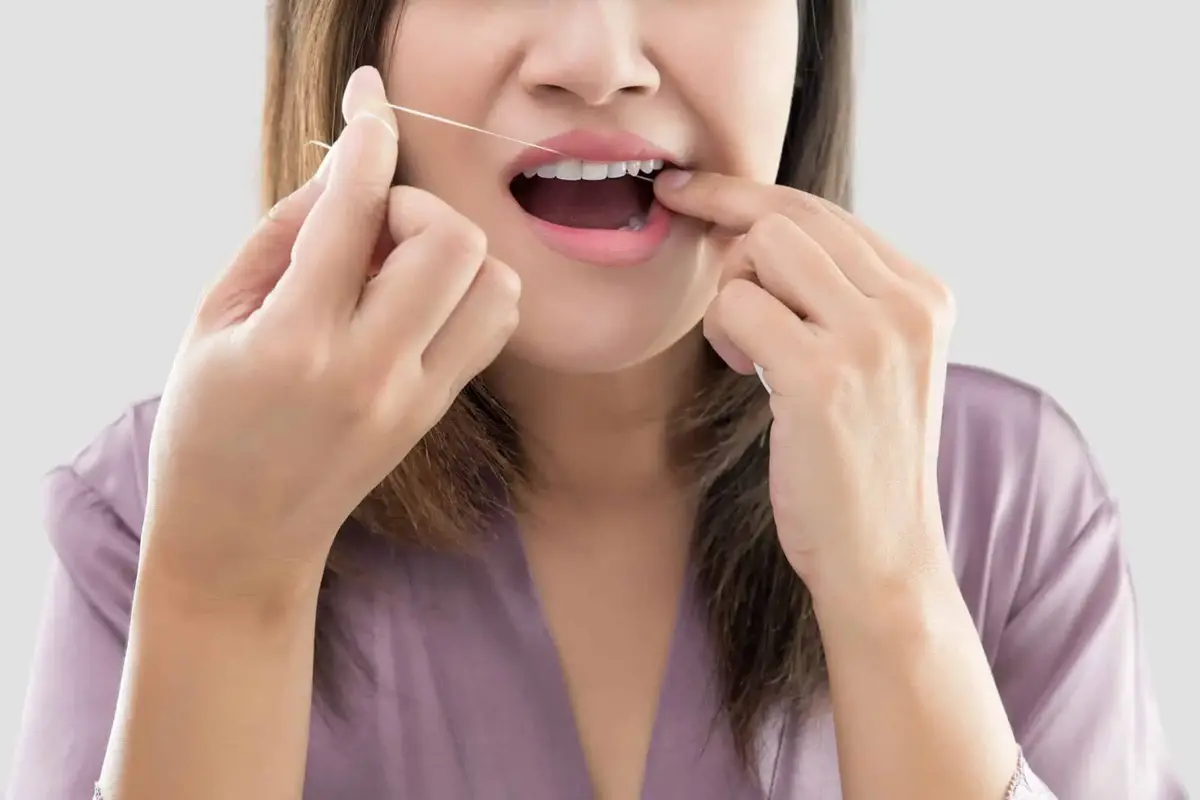Flossing. You might have heard about it from your periodontist near you or seen it in toothpaste commercials. But what exactly is flossing? Well, it’s a simple yet crucial part of your dental hygiene routine. Flossing involves using a thin piece of string, called dental floss, to clean between your teeth and along the gum line. It might seem like a small step, but it can make a big difference in your oral health.
Benefits of Flossing
Why bother flossing, you ask? Here are some compelling reasons:
- Removes plaque: Plaque is a sticky mix of bacteria that gathers between your teeth. Flossing gets rid of it, which helps prevent tooth decay and gum problems.
- Prevents gum disease: When you floss, you remove plaque and bits of food. This keeps your gums healthy and prevents issues like gum inflammation and bleeding.
- Freshens breath: Flossing gets rid of food bits that can cause bad breath. Doing it every day keeps your breath smelling good and your smile looking nice.
- Protects against tartar: Tartar is a hardened plaque that only a dentist can remove. Flossing helps stop tartar from building up, which lowers your chance of getting cavities and gum problems.
- Promotes overall health: Some studies suggest gum disease might be connected to other health issues like heart disease and diabetes. By keeping your gums healthy with flossing, you might also be helping your overall health.
Now that you know why flossing is important, let’s talk about some common flossing mistakes people make.
Common Flossing Mistakes
Not Flossing Daily
One of the biggest mistakes people make is not flossing regularly. Ideally, you should floss at least once a day to remove plaque and food debris from between your teeth.
Using Incorrect Technique
Lots of people find flossing tricky, especially getting the technique just right. Instead of snapping the floss between your teeth, try gently guiding it up and down, following the shape of each tooth and reaching under the gum line. This way, you’ll clean all the nooks and crannies effectively.
Skipping Hard-to-Reach Areas
Sometimes, we miss spots when we floss, especially those hard-to-reach back teeth. Remember to floss between every single tooth, even the ones way in the back of your mouth. This way, you’ll prevent plaque buildup and avoid getting cavities in those hidden spots.
Using Too Much Force
Flossing should be gentle yet effective. Avoid using too much force, as it can damage your gums and cause bleeding. If you experience discomfort or blood when flossing, see your dentist.
Not Using Enough Floss
Using too little floss can make it difficult to clean your teeth properly. Use a generous amount of floss, about 18 inches, to ensure you have enough to clean between each tooth without reusing the same section.
Rushing Through the Process
Flossing should take time and patience. Rushing through it can result in ineffective cleaning and missed spots. Take your time to floss properly, giving each tooth the attention it deserves.
Ignoring Professional Cleanings
Even if you floss diligently at home, it’s still important to visit your dentist for regular cleanings. A professional cleaning can remove plaque and tartar buildup that you may have missed, helping to keep your teeth and gums healthy.
Using the Wrong Type of Floss
There are multiple types of dental floss available, including waxed, unwaxed, flavoured, and tape floss. Experiment with different types to find one that works best for you and encourages you to floss regularly.
Flossing in a Straight Line
Instead of flossing in a straight line, make sure to curve the floss around each tooth in a C-shape. This helps to clean the sides of the teeth and reach under the gum line where plaque tends to accumulate.
Giving Up Too Soon
Flossing may feel awkward or uncomfortable at first, especially if you’re not used to it. However, with practice and perseverance, it will become easier and more effective. Don’t give up!
The Right Flossing Technique
Now that you know what not to do, let’s review the best way to floss:
- Start with around 18 inches of dental floss. Wrap most of it around your middle fingers, leaving about 1-2 inches to use.
- Secure the floss between your thumbs and index fingers.
- Use a gentle back-and-forth motion to guide the floss between your teeth.
- Curve the floss around each tooth in a C-shape and slide it up and down to clean the sides and under the gum line.
- Use a clean section of floss for each tooth to avoid spreading bacteria.
- Rinse your mouth with water after flossing to remove any loosened plaque and debris.
By following these steps and avoiding common mistakes, you can ensure that your flossing routine is effective and beneficial for your oral health.
Are You Struggling With Your Flossing Technique or Need Professional Advice on Maintaining Your Oral Health?
Look no further than Nima Ebrahimi DDS! Our team of experienced dental professionals and periodontist in Los Angeles is dedicated to helping you achieve and maintain a beautiful, healthy smile. From routine cleanings to advanced procedures, we offer comprehensive dental care tailored to your individual needs. Don’t wait until it’s too late – schedule your appointment today and take the first step towards a lifetime of healthy smiles!
